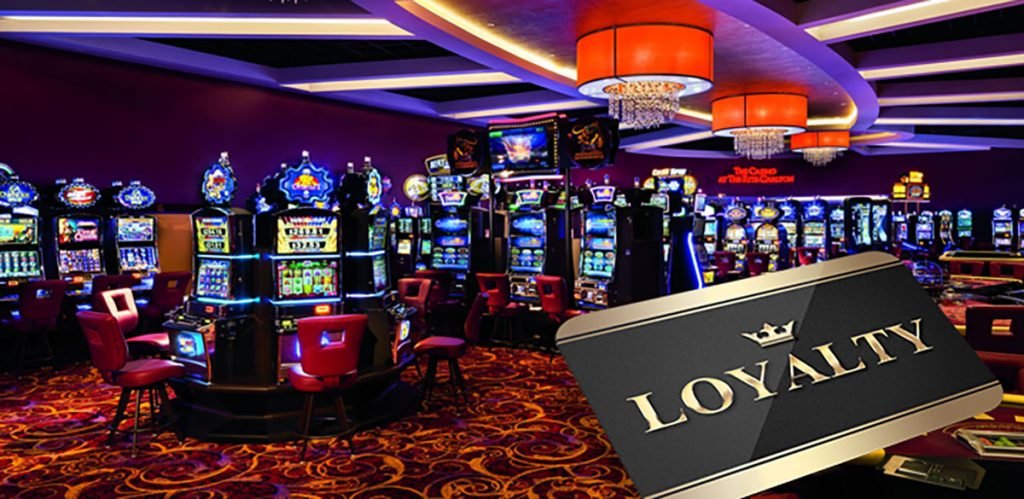The whole idea of Casino Membership Loyalty Ratings Systems is to tell the Casino Operation, especially Gaming and Marketing, how much their Patrons are worth and therefore how much value they are for your Casino operation. From this you can decide how much you wish to return to them by way of incentives, or as rebate, or “free” goods and services, so that they continue to frequent and to wager in your property.
After all, a casino membership loyalty system is just like any other loyalty system, such as the one you use when you go to the local supermarket, its central aim is to gauge what sort of a player you are, and to give you reason to come back. This is the sole reason for the various membership tiers, to segment the player market and to give enhanced rewards, and special consideration, to the most valuable of these segments.
However, this very capability of the loyalty system is very attractive for those who wish to personally profit from it without actually having to go through the rather tiresome process of actually seriously wagering and therefore contributing to your profitability due to the normal operation of negative expectation games. For these individuals’ the flaws in the structure and conception of the typical ratings system have led to vulnerabilities that they can exploit.
This activity is often called Point Picking or something similar.
There are two main ways to do this:
- “Lone wolf” style fraudulent or disguised play where the Point Picker typically works alone to perpetrate their fraud.
- Collusion, where the Point Picker is aided by a Casino staff member and thus works with an inside accomplice.
Of the two, the collusional scam tends to go on longer before detection and is far more lucrative for those involved in it, since it is far more expensive for the Casino in which it occurs.
Before we go any further it is important that we all share a basic understanding of how the rewards, or rebate value, for any customer is actually calculated. Simply put, for your average table game rating, this is as follows:
The average bet value entered into the system is multiplied by a Game Pace per hour value that is typically a constant (pre-determined and pre entered into the Ratings system, when the system was first set up) and is abstracted from the time that the patron is being rated over, typically in multiples, or fractions, of an hour. This give a Turnover value.
It is important to note here that some systems allow the staff member entering the rating to adjust the game pace, albeit typically by no more than a different, fixed, value; perhaps “Fast”, “Medium” and “Slow”, where Slow would be the default value for every game of that type in the Casino. Similarly, the Participation Rate is almost always presumed to be 100%, meaning that the assumption baked into the loyalty rating system is that any patron who is being rated is wagering every time that they have the opportunity to do so. So game pace = wager rate.
This Turnover value, mentioned above, is multiplied by a House Advantage (also typically a constant) to give a Theoretical Win value.
This Theoretical Win value is multiplied by a Rebate Rate value (it can have many different names and tends to vary somewhat by Patron card-tier) and this gives a Points Value or Resorts Dollar value, or whatever name is used for the actual Patron Reward in that particular Casino Group or Casino premises.
Let’s look at an example to illustrate this process:
Patron A is wagering on Baccarat, this particular game is face up using a Continuous shuffling machine and the Game Pace is assumed to be x40 coups per hour while the House Advantage has been agreed at 1.25%. The Rebate Rate on the table for Player A’s Membership Card tier is 10%.
Patron A wagers $500 per coup and plays for three hours before leaving.
The calculation of Resorts Dollars would therefore be:
Average Bet x (Game Pace per Hour x Hours played) = Turnover
Turnover x House Advantage = Theoretical Win
Theoretical Win x Rebate Rate = Resorts Dollars
So…
$500 x (40 x 3) = $60,000 (Turnover)
$60,000 x 1.25% = $750 Theoretical win (not very much is it?)
$750 x 10% = $75 Resort Dollars.
So three hours of play on this Baccarat table at $500 per coup would generate $75 of “free stuff”.
So where do we experience fraud based upon this? Well, the detail above should certainly give you some ideas on how to answer that question for yourselves. But to save you the trouble, I’ll outline some methods below:
Lone Wolf Style Fraud
In this fraud the perpetrator takes advantage of the function of the Ratings system itself and of the typical policies and procedures of the Casino Operator to gain Resorts Dollars for free.
So how is it done?
Well in the typical Casino Operation the Table Game Supervisor (or whoever actually rates the Patron) will look at the first couple of wagers of any patron and enters an average bet value based upon what they see being wagered, at that time. Thereafter, provided that the Point Picker remains at the table and appears to continue to wager, the Table Game Supervisor is unlikely to amend the rating. What this can lead to is a situation where the Point Picker stops betting, or radically reduces their participation rate, knowing that the system will automatically continue to reward them.
How much do they have to reduce their participation rate by?
Well we can calculate this by factoring the Rebate rate as a percentage into 100%. So in the example above this would give us a number of ten times (a 10% rebate rate goes into 100% ten times). If the Point Picker can reduce his actually wagered turnover by 10 times, from $60,000 to $6,000, then he or she will “break even”. They are no longer of any value to the Casino Operation at this level.
But if they can reduce their turnover by more than ten times, then they can actually make a profit.
By its very nature lone wolf point picking is a long term “grind” game. The Lone Wolf has to either:
- Spend long periods of time at a single table…not wagering…just accruing Rating Value.
- Spend shorter periods on many different tables so as to avoid excessive scrutiny, if the method above seems unlikely to be a success.
Either way the hours of “play” have to be put in.
It should also be fairly obvious that both of these methods, are likely to be far more successful within casino operations where the game type that was chosen to run the scam against is consistently busy. Within busy casino pits, or against busy casino tables, there is lots of camouflage in the form of other people actually making wagers. In such a situation our “helpful” lone Wolf scam artist will be more than happy to aid other people place their money on the layout as, to the casual glance, it may well look, as it is meant to, as though it were their money being wagered.
What to look for:
As a matter of course and to help in fraud and theft detection at any casino you have to have people who are going to do the boring work of looking at the numbers. There are many automated systems that can aid in this activity, many ways to ease the burden and to help the staff in question make informed decisions about what is going on, but there is no complete replacement, just yet, for somebody having to look at the numbers, and to understand what these numbers mean.
Extremely long Ratings should always be considered and investigated. Unless we are talking about VIP play where we know for a fact that the individual patron set themselves down at the table and then didn’t move, for several shifts worth of staff; and often even here, long-duration ratings should be checked to ensure actual play.
Even with VIP patrons, unless they are rewarded by a different methodology, the iron law of the rating system methodology ensures that they will be rewarded for a 100% participation rate at whatever the game pace is set to. Which might be fine if they are playing, but can be very expensive if they are not.
Similarly, extremely large numbers of short duration Ratings should also be checked. Your casino operation should have an easy way to determine which individual patron has been rated most frequently across any given single, or combination of, Gaming days; and those who have accumulated large numbers of short duration Ratings should be set aside for future, more in-depth, scrutiny.
Collusion
Collusion is always far more dangerous for a Casino Operator than almost any external cheat or fraud is; this is because the first line of the Casino defences, the Gaming Staff themselves, have been co-opted, and are actively helping the fraudster.
So, how does a Ratings based collisional fraud work? There are a number of ways:
- The Player Agent (the Casino staff member aiding the fraudster) can inflate the time that the Point Picker was at the table and wagering. In the example above another, fraudulent, hour at the table increases the turnover by $20,000, theoretical win by $250 and Resorts Dollars by $25.
- The player Agent can inflate the average bet of the Point Picker. In the example above a doubling in average bet from $500 to $1000 similarly doubles the Resort Dollars granted to the Point Picker.
- A combination of 1 and 2 can be practiced, boosting rewards still further.
- Finally the Player Agent can make Ratings up. Typically there are two ways to do this:
- The Player Agent makes the whole thing up: the Point Picker is not even present at the table and is “Rated” for nothing. This can be risky, as a different staff member checking up can easily recognise that no Patron is present for a particular rating. Because of this these types of ratings tend to be “little and often”, lots of short duration ratings rather than long ones.
- The Player Agent can hijack a legitimate rating for a real Patron and assign it to the Point Picker. Typically by using the Membership number, or a copy of the Membership card, of the Point Picker instead of the Membership card of the legitimate Patron. This can be very difficult to detect unless the Patron whose rating is hijacked is well known or easily recognizable. In this case there is little control over the actual rating produced and the reward linked to it, but since there is no actual play (from the Point Picker) there is no risk of any loss either.
Modern rating systems have capabilities that actually facilitate 4a, above, by allowing the staff member creating the ratings to “roll it back” under certain circumstances. There are some, completely legitimate, reasons why this capability has been enabled. A valuable Patron might have started to gamble, but, for whatever reason, they had been missed, and their rating start time does not coincide with the start time of their actual play. In such a situation, and in the name of customer service, the start time of the rating might be rolled back to the earlier time when the actual play began.
As a security measure it is often impossible to roll back a rating more than a certain number of minutes, most commonly thirty. But, this is of little value against our intrepid player agent.
All that the player agent has to do is to continually create new Ratings, roll them back slightly less than the maximum permissible value, then close them. This rating, despite being brand-new, effectively exists entirely in the past. From a camouflage standpoint it is even better, since, should anyone ask about the patron being fraudulently rated the player agent can claim, since the rating is closed, that they have “just left”. When, of course, they were never there.
What to look for:
Again, the surveillance department, or whoever else is tasked with investigating these matters, should put a process in place to routinely look for longer duration Ratings, and to perform spot checks against them to ensure that they are legitimate, that somebody is at the table, and that this somebody is actually wagering at some participation rate far above zero.
Similarly, policies and procedures should be in place whereby the average bet within a rating for any particular patron can be considered against the staff member issuing those ratings. That is, the range of average bets, from highest to lowest, should be considered, and then this range plotted against the staff members who input them. If there is a major discrepancy here, between the average bet as entered by one staff member, compared to their peers, then this, again, should be a cause for further scrutiny.
For collusional Scams where ratings are just completely made up then, again, it is the frequency of the number of ratings granted to the individual patron in total and, most especially, by the individual employee to that Patron, that should be scrutinized. System should be in place to identify these patterns of activities and this is an area where exception based reporting, and most especially some iterations of the AI, are extremely valuable.
As for the final type of Collusion, this can be rather more difficult to detect. Certainly, when simply using the camera system without access to any of the underlying data, since the play looks, and indeed is, legitimate, it is merely the final beneficiaries that is fraudulent.
Processes should be put in place so that patrons (who since they are only looking after themselves, will typically notice when they do not have the points, or Resorts Dollars, that they believe due to them, much sooner than any facet of the casino operation will) can report “missing points”. While this can, undoubtedly, become a chore it can identify collusion between staff and patrons.
Similarly, regular surveillance activity, such as watching gaming tables, can also uncover this type of fraud, if the operator knows what to look for. Anytime that a staff member either enters a membership number directly into the system without swiping a card, or appears to have a membership card on their own person, then this is a cause for suspicion. Unless the patron is extremely well-known and a very regular visitor then how would any staff member know their membership number well enough to enter it, unprompted, into the rating system?
But the simplest way? Again it is based upon the data. As it is in any fraud. A colleague of mine puts it very well:
The fraudster always cashes out.
For the Collusion to be of any benefit than the fraudster has to be able to gain sufficient value to make it worth their while. Therefore there has to be sufficient Ratings for them to earn this value and, unless they have co-opted considerable numbers of Gaming staff, in which case your problems are far deeper than you might’ve thought, there are only a limited number of individuals, probably only one person, who is in a position to give this to them.
Therefore, you should always, always, look for an excessive numbers of ratings, duration of ratings, or value of ratings, inputted by a single staff member to a single patron, far outside the bounds of both what you would expect and of what any of their peers are doing. This is the pattern to look for and, if you find it, you will almost certainly have found Collusion as well.












3 responses on "An Introduction to Rating Scams"
Excellent article, well written.
Great Post
Happy you liked it…check out the rest as well